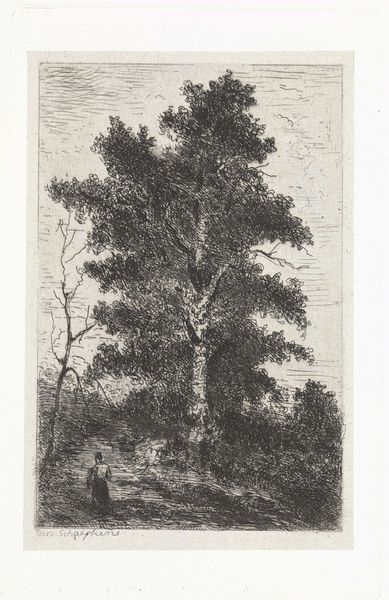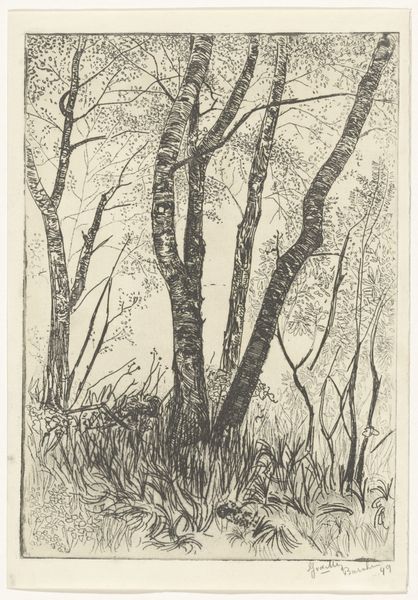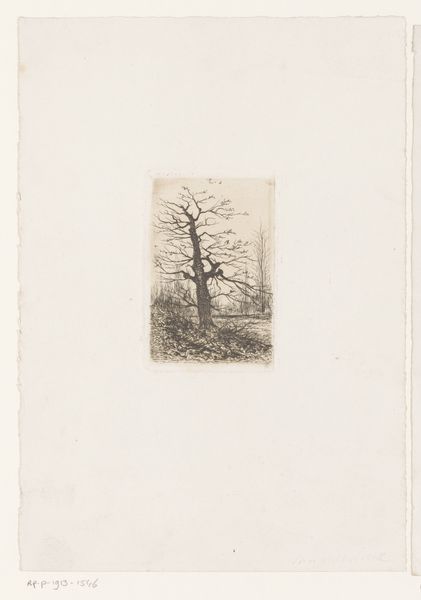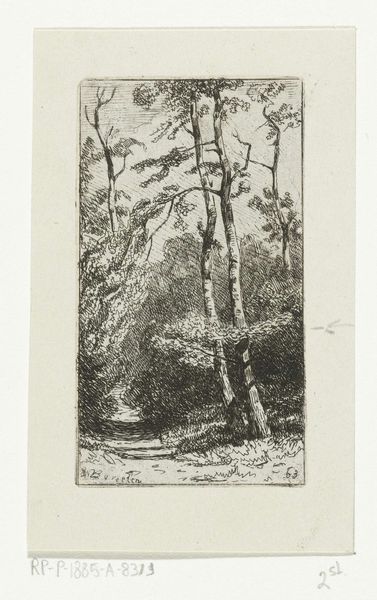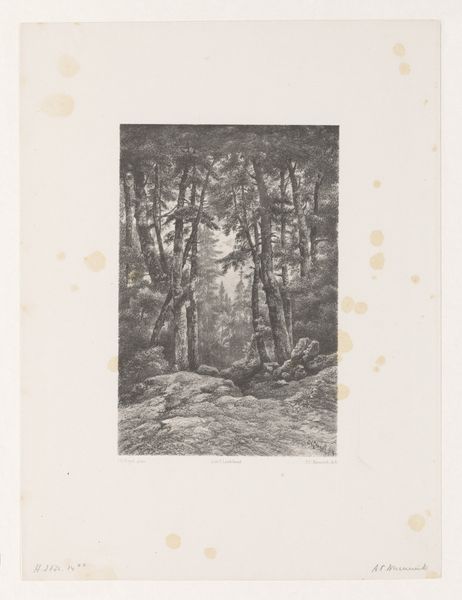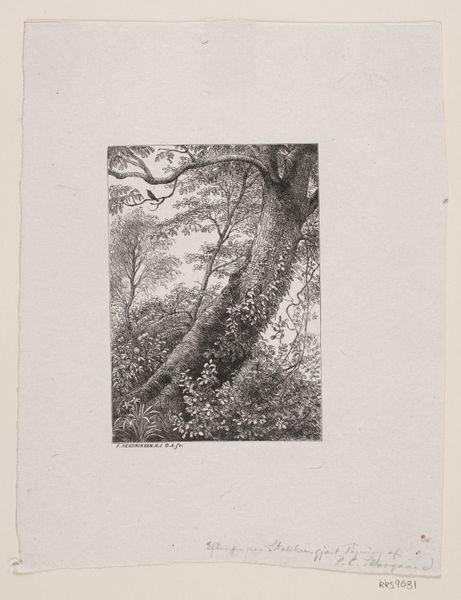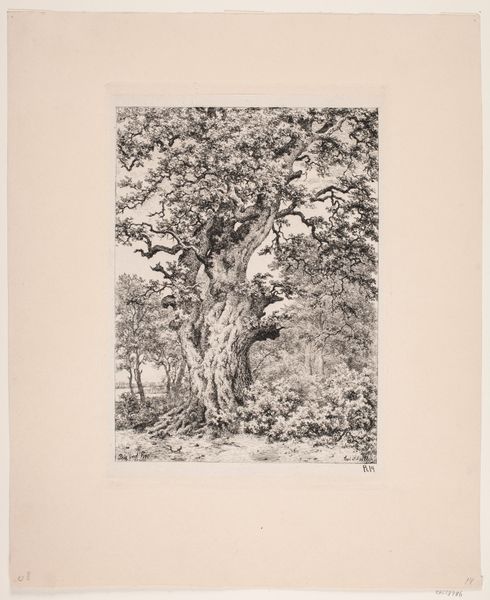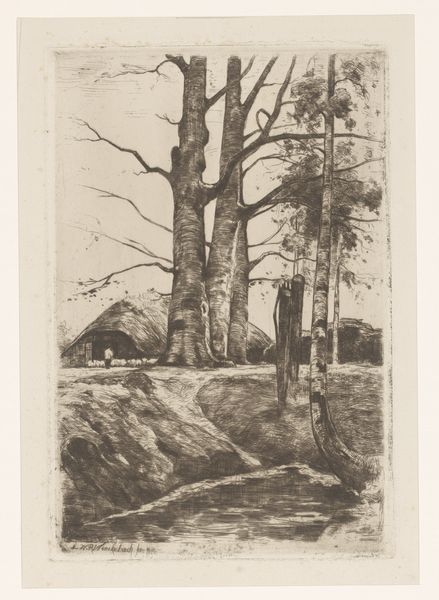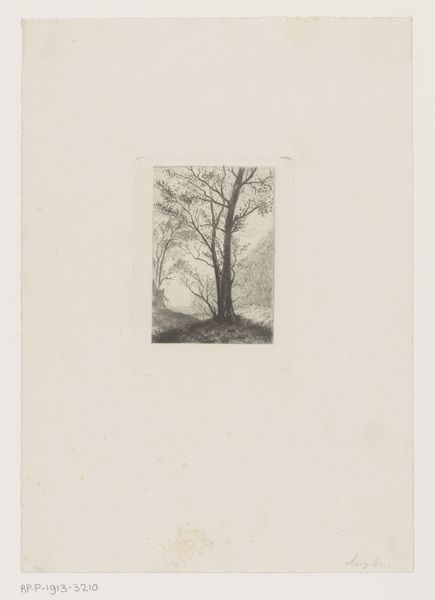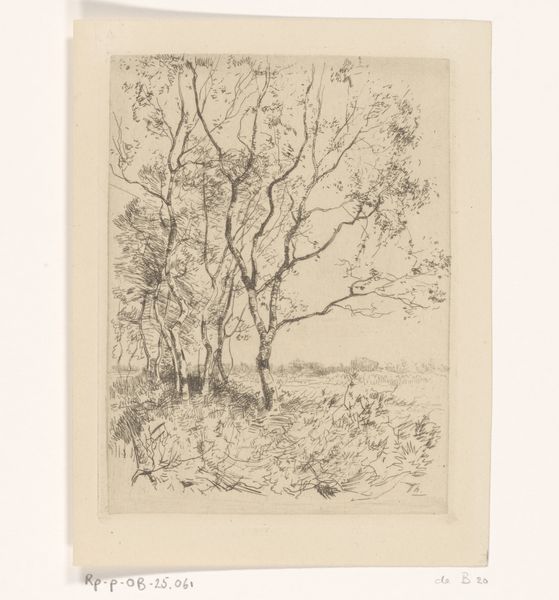
Dimensions: height 193 mm, width 123 mm
Copyright: Rijks Museum: Open Domain
Curator: The subtle beauty of this landscape almost gets lost with the naked eye, doesn't it? Editor: It's quite somber actually. I see tall trees silhouetted against what looks like a fading sky. What can you tell me about this piece? Curator: Certainly. This etching by Arnoud Schaepkens, created sometime between 1831 and 1888, is called "Drie bomen in een landschap" which translates to "Three trees in a landscape". I find it captivating. It demonstrates a key engagement with landscape during that period, specifically within Romanticism. Editor: As an etching, I’m immediately interested in the plates he would have used, where they were produced and how the acid would have interacted to define form and create tonal contrasts within this image. The act of landscape printmaking opens conversations of value with these subjects that is further removed from direct observations from nature. What can we determine about its intended display in the region? Curator: Good eye. Schaepkens worked mostly in the Netherlands and his landscapes became part of a larger nationalistic narrative – how art served to unify sentiments through the power of images. Editor: I think those sharp lines and textural richness come from that process and that helps intensify this natural depiction with very modern techniques. How accessible was it, and for whom was it accessible to experience these images? Curator: Landscape imagery became extremely popular among the burgeoning middle class during this era. It represents that growing sense of national pride that's closely linked to the accessibility of printed materials. As an art object it can reach a wider, local public beyond painting, influencing cultural values and ideas through visual representations and printed forms of production. Editor: Very interesting! It's always illuminating to see how art, at its core, intertwines with those social dynamics. Curator: It is, isn't it? Hopefully, it prompts some reflection on what materials are worth extracting for visual representation. Editor: For me too, it leaves a final, melancholic but intriguing feeling.
Comments
No comments
Be the first to comment and join the conversation on the ultimate creative platform.
